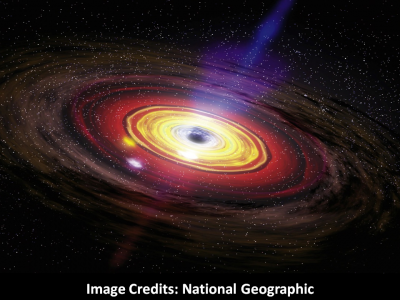
Dark matter is a strange scaffolding that forces matter and it effects. The best theories are crumbling amid a frustrating lack of progress in determining exactly what dark matter is. Scientists have noticed that galaxies in the universe do not rotate in the same physical nature as the spinning plate. Stars at the edge of the galaxy are spinning faster than expected was one of the worries. Their movement can only be explained by the presence of a large amount of invisible matter that we cannot see: dark matter. And this lack of visibility makes the research that much more difficult.
It seemed more interesting than worrisome at first when the field was new and ideas were plentiful and not yet proven wrong. The researchers combined efforts into two main groups: MACHOs (Massive Compact Halo Objects) and WIMPs (Weakly Interacting Massive Particles).

Massive is Not The Answer!
The least unusual possibility is massive compact coronas. You and I don’t glow or reflect light very well, so space and galaxies may contain a lot of things we can’t see; Simply because it’s dark, this suggestion makes sense; We don’t have a big enough flashlight. There aren’t planets and stars big enough to ignite the world’s devouring space wormholes. It is relatively small. Except that we can detect some of those (non-worm) objects that are there because they are so massive that they bend light around them. Thus, we know of their existence despite the darkness.
However, there are not enough of them to explain the rotation of galaxies mathematically. The same problem arises if we imagine a universe full of scattered black holes, we will need to see these light-bending gravitational lenses everywhere and we can’t see them even when we look very closely.
The search for massive, weakly interacting particles:
The astrophysics community has moved mostly towards massive, weakly interacting particles rather than large things believing that the universe may be filled with small things that we can’t see. These may be swarms of atom-like particles that do not reflect or absorb light or any other type of electromagnetic energy, unlike all substances that can be touched, measured, and seen around us on Earth.
This concept is even more troubling because the rules of science are supposed to work the same everywhere in the universe. We know neutrinos do exist– tiny, often massless particles that barely interact with the universe around them. The problem is that they are mostly without mass, and we can’t tell how there are enough of them to make up the 84 per cent of the matter in the universe all of it invisible to us.
So dark matter might be a different object that we haven’t noticed at all, something called a neutralino. Researchers have come up with a plausible description of these particles, how they originated from the Big Bang, and how they would fit into the Standard Model of particle physics without busting anything else along the way.
Can Dark Matter be another Thing?
We’ve been searching for dark matter for a while, and we’ve built exceptionally sensitive devices to search for it. These instruments include liquid xenon pools stored several miles underground, and telescopes that search for dark matter particles that decay into things we can see and measure like gamma rays. Also the Large Hadron Collider (LHC), one of the most expensive science experiments ever built, but we still haven’t found dark matter, WIMPs, or any convincing evidence of their existence. Except for the one consistent evidence that the universe is heavier than we can see.
The worrying feeling is increasing these days. Decades ago, scientists documented the existence of luminous ether as a means of carrying light. Now, this seems to be an imperfect belief that should have been dropped much earlier. The scientists insisted because they were certain that light, like sound, needed the means to travel despite accumulating evidence against the concept. After being fooled once, scientists must ask: Is dark matter the new ether? For decades several scientists have advanced their theory called Modified Newtonian Dynamics based on the premise that physics does not work as we know it on the largest scales, that we make erroneous conclusions, and that dark matter is not needed to explain the universe.
No one has succeeded in developing a modified Newtonian dynamics theory that adequately explains the universe around us, but it sometimes gains credibility simply because the competing theory of dark matter has a fatal flaw: we can’t find it. We may be wrong about something in the Standard Model, which shows how the smallest particles in the universe behave and interact and dark matter may be present but in a completely different form than we expect. Or maybe we are wrong about the laws of gravity. Or maybe one of the experiments will bring the Neutralino tomorrow. The researchers say that any particle colliding with the ultra-cold xenon basin will reveal a new particle to the LHC team. Science is difficult when looking at the stages of scientific progress. Only yesterday we started searching for dark matter. Once it is inferred, we may discover that the physics known now is very wrong, and this possibility is worrying until now.
Dark matter and the Ability of Formation:
Dark matter can collect deep within the diffuse haze of gas and dust that surrounds the smallest of galaxies in the form of cold droplets called Bose stars. We certainly don’t even know what the mysterious dark matter is, regardless of evidence for the existence of unseen stars. But if current assumptions hold true, a new mathematical model suggests that dark matter might have some strange interactions. This model was proposed by a team of Russian physicists who considered that the way virtual particles of dark matter gather is to collect in the smallest galactic halos. Physicist Dmitry Levkov from the Institute for Nuclear Research of the Russian Academy of Sciences stated: “In our work, we simulated the motion of the quantum gas of light interacting with dark matter particles by means of gravity.”
Approximately 80 percent of the mass in the universe is made up of something undetectable. Whatever happens, it does not interact with natural matter through the usual methods, such as the exchange of photons through the electromagnetic field. The only sign of the presence of dark matter is the extra gravity that galactic clusters add. But that’s no small thing, this invisible extra gravity has been mapped out in detail, giving us basic information about its nature. Thanks to its apparent attraction to galaxies, we can assume that the velocity of the material that makes up dark matter is not fast enough to shoot into the gaps of space and therefore its movement must be relatively slow. One candidate for this inert dark matter is a hypothetical particle called axion – a type of boson not unlike photons that have been proposed as a solution to another puzzling paradox in quantum physics.
Another option is hazy dark matter — another type of boson that was invented as a solution to a dilemma in astrophysics regarding the distribution of dark matter in galactic halos. None of these putative bosons have been proven to exist, but if at least one of them turns out to be real, they could do some interesting things under some conditions. The researchers claim that the model is the first to look at the mobility of such dark matter, which is a Bose-Einstein condensate.
Bose-Einstein condensates are unknown assemblies of quantum particles. When the temperature drops to degrees close to absolute zero, the particles give up mixing and lose their individual identity to appear strangely alike. Many of the previous questions attempt to answer what happens when bosons clump together, as the situation seems to be a mess of interacting bosons.
“We started from the Ferial case with maximum mixing, which is in contrast to the Bose-Einstein condensation,” says Levkov. After a very long period – 100,000 times longer than the time required for a particle to pass through the simulation – the particles spontaneously formed a state of condensation, which immediately formed itself into a globular droplet “Pose star” under the influence of gravity.
As a result, the boson cloud of dark matter behaves the same as a particle. Not only that, but physicists have also concluded that this cloud can gather under the influence of gravity to form a ball “Bose star”.
The conditions for these hypothetical objects must be somewhat specific, such as focusing on the middle of the relatively small halo surrounding the dwarf galaxy. This should happen during the lifetime of the universe, so this process will continue to be slow. These types of scenarios may seem like a figment of science fiction, but they help us better define the limits of where to look for clues to the complete mystery of dark matter.
“The obvious next step is to predict the number of Bose stars in the universe and calculate their masses with models from light dark matter,” Levkov says.
One day we will eventually understand the basic nature of this phantom mass. When we do that, we are sure to find some amazing structures hiding among the stars. Viral’s case (quantum force theory): It is a theory that provides a general equation that relates the arithmetic meantime of total kinetic energy with the potential energy of a stable system consisting of N particles related to the potential forces.

Dark matter’s Destruction:
The researchers suggest learning more about dark matter by researching its effects on exoplanets. Large gaseous planets outside the solar system may be full of self-destructive dark matter, and a team of researchers is proposing to use the soon-to-be-launched James Webb Space Telescope to survey the potential effects of rising temperatures on massive, distant objects in the galaxy, which may be caused by dark matter that outweighs ordinary matter. A ratio of 6 to 1 in the universe.
Physicists know that dark matter exists because it pulls on stars and galaxies by the force of gravity, but so far this invisible matter has frustrated every attempt to better understand its properties. “Many theories about dark matter suggest that it is made up of individual particles and that these particles can sometimes collide with each other, as in ordinary matter particles,” Ohio State University physicist and particle astronomer Jory Smirnov told Live Science. According to these models, two dark matter particles might smash into each other, generating heat.”
“If these assumptions are correct, dark matter particles should occasionally collide with large objects such as planets outside the solar system, causing the particles to lose energy and accumulate inside those worlds, and there they may be able to eliminate each other, producing a measurable and visible thermal effect from one place,” Smirnov said. far”.
Together with colleague Rebecca Lin, a postdoctoral researcher at the Slack Laboratory in Menlo Park, California, Smirnov proposed using the James Webb Space Telescope, which would scan the sky with infrared radiation from the electromagnetic spectrum, to search for this distinct thermal effect.
“It is possible that larger exoplanets are gathering together to form more dark matter, so the best candidates for these searches would be gas giants larger than Jupiter or brown dwarfs that were close to becoming stars,” the researchers wrote in their paper, published in Physical Review Letters. They failed to accumulate enough gas to ignite nuclear fusion in their cores.” It may be difficult to determine whether the heat is coming from dark matter destruction or some other process, so Smirnov and Lane suggest looking for exoplanets pulled out of their parent star system. They are very old, which means they may have cooled to very low temperatures.
If such an object is unusually glowing in the infrared, it could indicate the presence of dark matter. “But a more reliable way is to look for large numbers of exoplanets throughout the Milky Way and map their temperatures,” says Smirnov. “The dark matter is expected to accumulate in the center of the galaxy, so this map should show the slight elevation.” in exoplanet temperatures when we look closely at the heart of the Milky Way.”
No known astrophysical activity can explain this effect, and if we see something like this, it must be dark matter. Capturing a trace like this helps physicists determine the mass of dark matter particles and their interaction rate with ordinary matter, and since the Webb Telescope, expected to launch in October, will already be looking for exoplanets throughout the galaxy, Smirnov thinks it can work to map potential thermal effects of dark matter within 4 or 5 years, “It’s an amazing idea,” Bruce Macintosh, an astronomer who studies exoplanets at Stanford University in California and was not involved in this work, tells Live Science.
Researchers have built massive detectors underground to try to catch dark matter particles. He also added that there is a limit to how large a detector can be built. “We have to take advantage of the big things that nature has to offer,” Macintosh added.
His only criticism of the study was that the Webb telescope would do targeted, in-depth studies of relatively few things; It might not be the best telescope for this job. He added that the Roman Nancy Grace Space Telescope, launched in 2020, will map the entire sky in detail; It may be more suitable for this task.
References:
– https://www.livescience.com/dark-matter-destroying-itself-inside-exoplanets.html
– https://www.quantamagazine.org/tag/dark-matter/
– https://www.youtube.com/watch?v=8sUfiP9AUSo
– https://www.youtube.com/watch?v=J5vcAZoxhAc
– https://www.youtube.com/watch?v=QAa2O_8wBUQ












